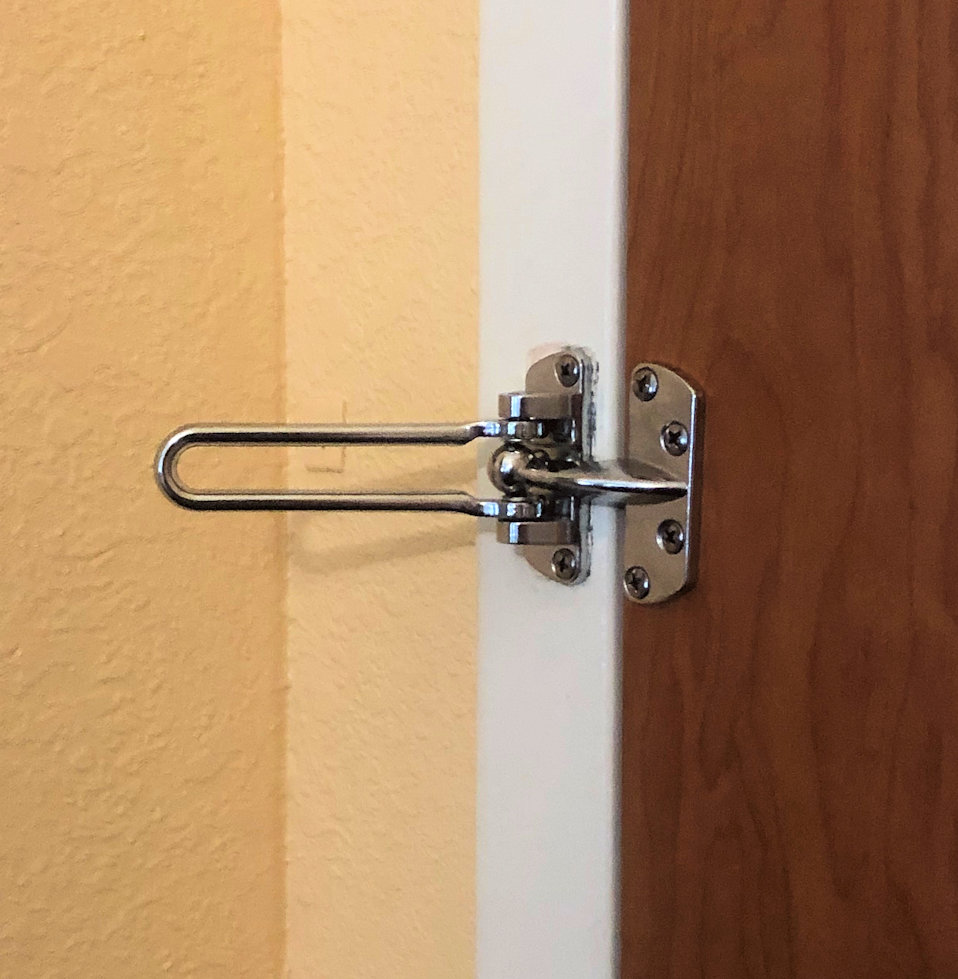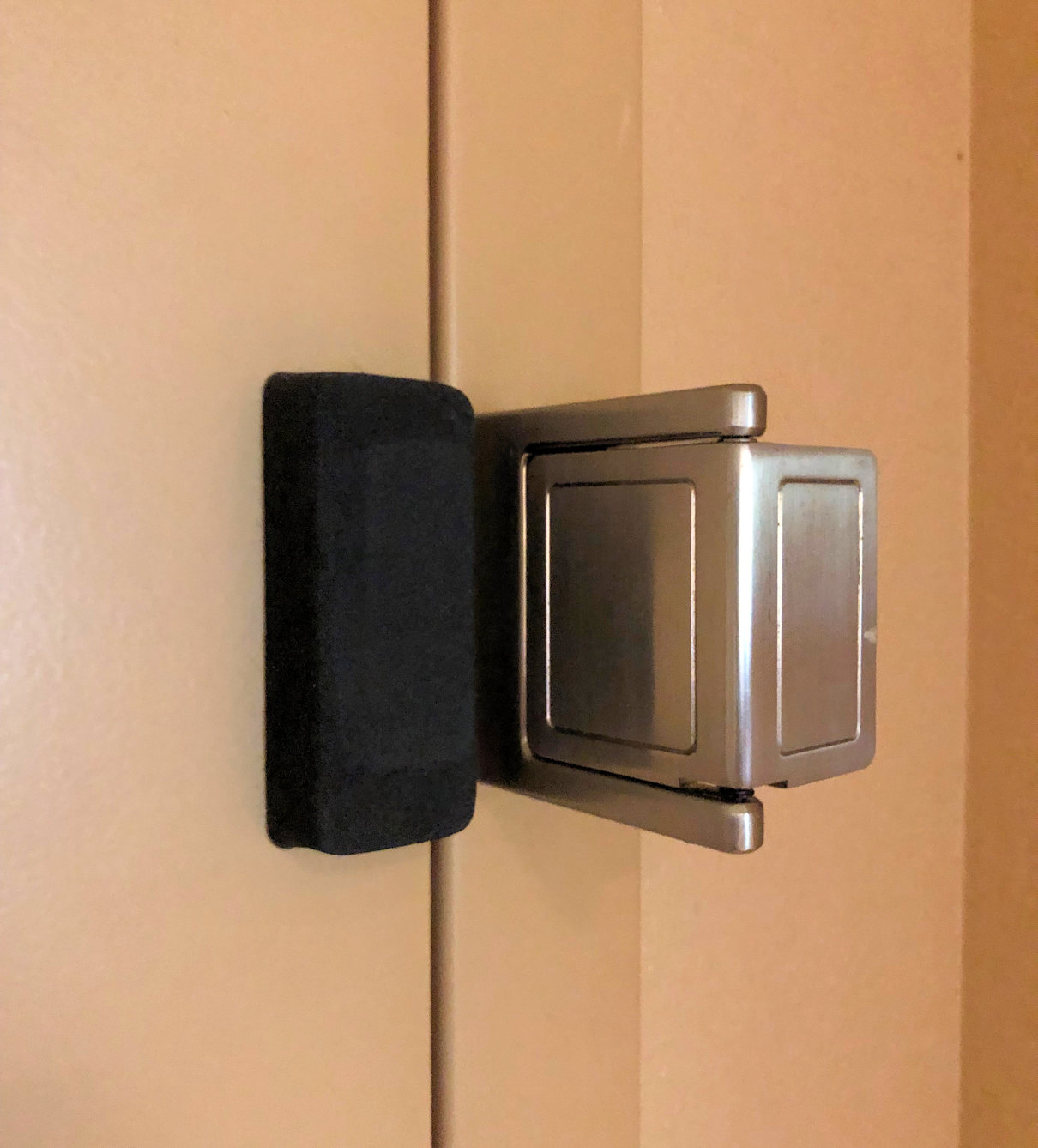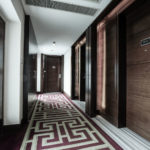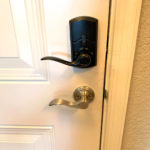As I continue on my training adventure, staying in multiple hotels along the way, I’m reminded of a “Quick Question” that recently hit my inbox:
Are swing bar door guards prohibited by NFPA 80 for fire door assemblies on hotel rooms?
Door guards are often installed on dwelling unit and sleeping unit entrance doors, to allow the door to be opened a few inches while maintaining security. An urban legend has been making the rounds, which suggests that this is the type of door guard that must be used on hotel room doors that are fire rated:
The reasoning behind this is the NFPA 80 requirement for fire door inspections to include verification that “Auxiliary hardware items that interfere or prohibit operation are not installed on the door or frame.” The misinterpretation is that this type of door guard can not be used because it could be used (improperly) to prevent a fire door from closing:
I spoke with NFPA staff about this question a while back, and we agreed that the swing bar door guard was not the type of hardware that was intended to be addressed by this inspection requirement. Although some types of hardware – for example, a deadbolt – could be misused in order to prevent a fire door from closing, the intent of NFPA 80 was not to prohibit the use of listed hardware that might be used incorrectly. The NFPA 80 Handbook includes specific examples of the auxiliary items that should not be installed: kick-down door stops, wedges/chocks (e.g., wood, rubber, and other materials), hold-open door closer arms, friction and manually operated door holders, chains, ropes, or other items that interfere with the operation of the door.
Unless a state or local jurisdiction has a specific modification addressing these devices, or a code official interprets the requirement in a different way, either type of door guard would be acceptable for door from a corridor to a hotel room as long as it is listed for use on a fire door assembly. Keep in mind that the model codes only allow these security devices as a secondary locking method for dwelling unit and sleeping unit entrance doors, and not for locations where doors are required to unlatch with one releasing motion.
You need to login or register to bookmark/favorite this content.











Leave A Comment